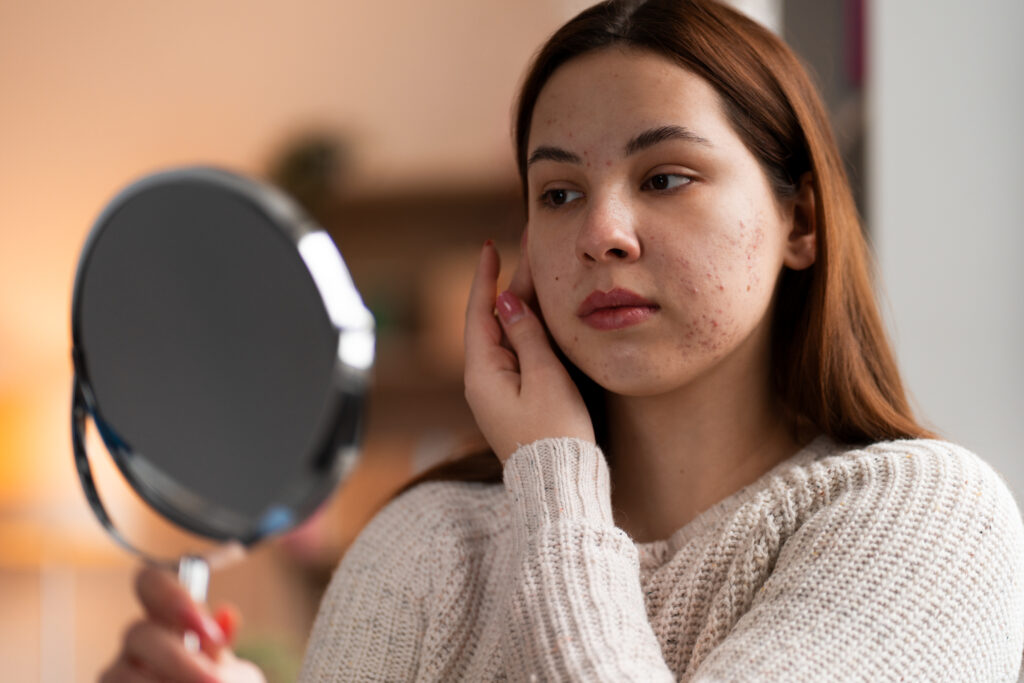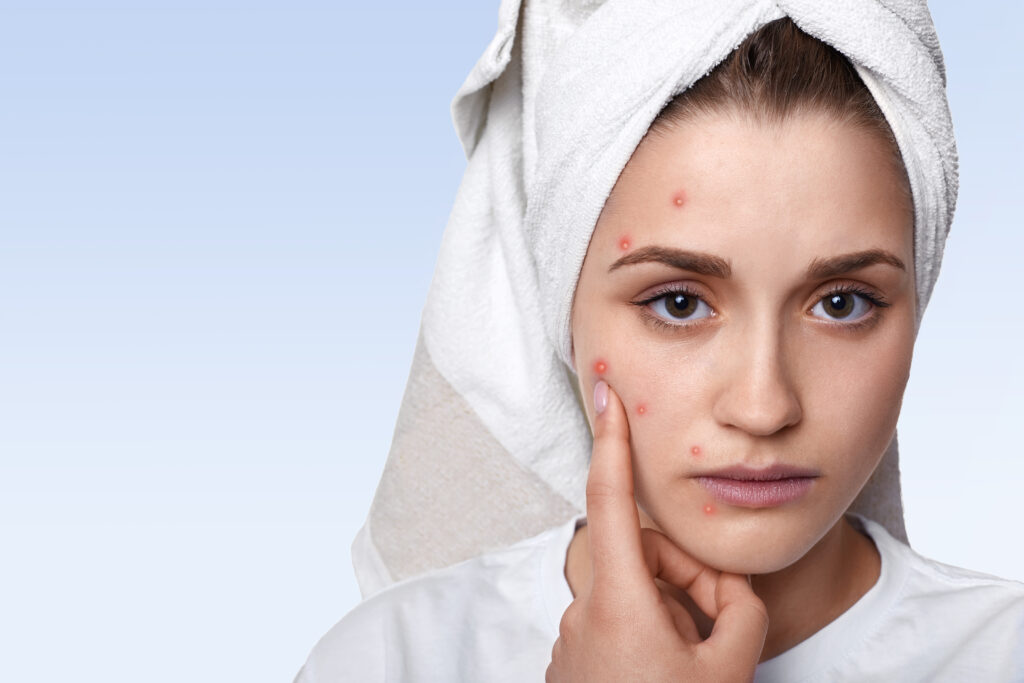
Taking care of your skin during your teenage years can make a big difference, especially if you have acne-prone skin. With all the changes happening in your body, hormones often trigger extra oil production, which can lead to breakouts. This is why it’s so important to build a routine that protects your skin and helps prevent acne. Following simple skincare “do’s” and avoiding common “don’ts” can greatly benefit your skin’s health and clarity.
Table of Contents
ToggleUnderstanding Teenage Acne and Skin Types
Teenage acne is common because of hormonal shifts that increase oil production, making it easier for pores to get clogged and cause breakouts. However, not all acne-prone skin is the same! Some people may have oily skin, while others might have combination or sensitive skin, and each type requires different care. Recognizing your specific skin type is the first step to choosing the best products and practices that work with your skin—not against it.
The Do’s of Skincare for Acne-Prone Skin
1. Do Cleanse Gently Twice Daily
Cleansing helps keep acne-prone skin clear by washing away excess oil, dirt, and bacteria. Avoid harsh soaps and instead use a gentle, non-drying cleanser each morning and night to keep skin fresh without stripping it of its natural moisture.
2. Do Use Non-Comedogenic Products
Non-comedogenic products are specifically made not to clog pores—a big win for acne-prone skin. Look for non-comedogenic labels on your moisturizer, sunscreen, and makeup to prevent pore blockage and reduce breakouts.
3. Do Moisturize Daily
Even if your skin is oily, it still needs hydration! Using a lightweight, oil-free moisturizer daily helps keep skin balanced and less prone to breakouts. Moisturizing can actually reduce excess oil, so don’t skip this step.
4. Do Use Sunscreen Every Day
Sun protection is a must, especially if you’re using acne treatments that make skin more sensitive to the sun. Choose an oil-free, acne-friendly sunscreen to prevent irritation and sun damage while keeping pores clear.
5. Do Spot Treat with Acne-Fighting Ingredients
Acne-fighting ingredients like salicylic acid, benzoyl peroxide, and tea tree oil can be great for targeting blemishes. Apply a small amount directly to the pimple and let it work its magic—don’t overdo it to avoid drying out the skin around it.

The Don’ts of Skincare for Acne-Prone Teenage Skin
1. Don’t Overwash or Exfoliate Aggressively
Washing too often or scrubbing harshly can strip away the skin’s natural oils, leaving it dry and irritated—and often more prone to breakouts! Aim to cleanse twice daily with a gentle face wash. Exfoliate lightly, at most 1-2 times a week, to remove dead skin cells without causing redness or irritation.
2. Don’t Pick, Squeeze, or Pop Pimples
It’s so tempting, but squeezing or popping pimples can make acne worse, spread bacteria, and leave scars. Instead, try spot treatments with acne-friendly ingredients like salicylic acid, or use a warm compress to help pimples heal on their own.
3. Don’t Use Heavy, Pore-Clogging Products
Thick, oily products can clog pores and lead to more breakouts, especially on acne-prone skin. Look for labels like “non-comedogenic” or “oil-free” when choosing makeup and skincare products. Lightweight moisturizers and sunscreens are your best friends here!
4. Don’t Switch Products Too Often
Skincare products need time to work their magic! Constantly changing products can confuse your skin and make it harder to see results. Stick to a routine for at least 4-6 weeks before determining whether a product is effective.
5. Don’t Ignore Diet and Lifestyle Factors
Your diet, sleep, and stress levels can all affect your skin. High sugar, poor sleep, and stress can lead to more breakouts, so focus on eating well, getting good rest, and managing stress. Small lifestyle changes can make a big difference for acne-prone skin!

Creating a Simple, Effective Routine
Creating a simple routine for acne-prone skin does not have to be difficult! In the morning, start by gently cleansing your face to remove any oils that built up overnight. Follow up with a lightweight, oil-free moisturizer to keep your skin balanced, then finish with a non-comedogenic sunscreen to protect against UV rays that can worsen acne.
For the evening, cleanse again to wash away dirt and oil from the day, then apply a gentle moisturizer to hydrate your skin overnight. If you have any active spots, use a small amount of spot treatment only on those areas. Keep it simple, stay consistent, and let your skin adjust gradually—sometimes less is more!
Conclusion
In conclusion, keeping acne-prone skin healthy comes down to following a few simple do’s and don’ts. Stick with gentle cleansing, daily moisturizing, and always use sunscreen, while avoiding harsh scrubs and picking at pimples. Remember, great skin doesn’t happen overnight—patience and consistency are key! With the right routine, clearer skin is definitely within reach.
FAQS
It’s best to cleanse acne-prone skin twice daily—once in the morning and once at night. Overwashing can strip the skin of its natural oils and potentially lead to more breakouts.
Yes, avoid heavy oils and pore-clogging ingredients, such as coconut oil and certain silicones. Opt for non-comedogenic products that won’t clog pores.
No, even oily, acne-prone skin needs hydration. Look for a lightweight, oil-free moisturizer to keep skin balanced and prevent it from producing excess oil.
It’s best to avoid popping any pimples, as this can cause scarring and spread bacteria. Instead, try a spot treatment or consult a dermatologist for severe cases.
Most skincare routines take about 4–6 weeks to show visible results, so stick with it and be consistent for the best outcome.